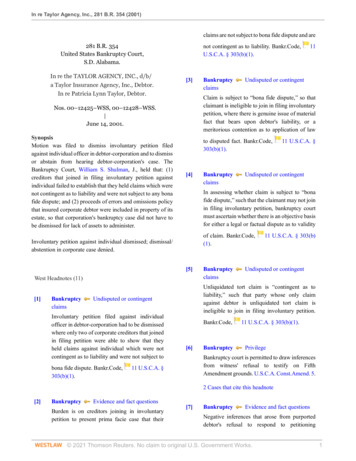
Transcription
LIMITEDEDITIONSSassafras 814ceKoa/Cedar500 SeriesFigured Ovangkol200 DLXNEWGRAND PACIFICBenHarperBlackwood &Mahogany 327eBEATIE WOLFE’SALBUMINNOVATIONS
www.taylorguitars.com2LetterssocialcirclesEmail ustaylorguitars.com/contactJoin the Taylor communityconditions of the mill, the people whowork at the mill, and the community thatsupports the mill in Cameroon.Scott McCordAcoustic JewelV-Class: Even Better with AgeI bought a new V-Class 714ce alittle more than a year ago. As I play itin and it ages, it has warmed up anddeveloped more bass, as I would expectof any new guitar. But the aging processfor this guitar is different. Most guitarsdevelop more bass as they age, but itoften sounds slightly “muddy.” But withthis guitar, as it develops a warmer,slightly more bassy overall tone, thesound is what I can only describe as“transparent” — very clear, non-muddybass and midrange. That’s one noticeable difference about this guitar, and Ireally like it.David SippelDoing the Right ThingI just finished listening to the Taylorpodcast featuring [Taylor Chief FinancialOfficer] Barbara Wight. I enjoyedhearing the stories from her travels toCameroon and Taylor’s ebony mill.I bought my first Taylor a few monthsago. I initially thought that I wanted anacoustic from another manufacturer,but after much research was convincedto turn to Taylor. I have not regrettedone second of my decision. And thenafter getting to know the company andthe people who founded and currentlywork for Taylor, I must say that everyacoustic purchase I make from now onwill be a Taylor. I admire and respectthe philosophy of doing the right thing,as in the stories of the ebony mill, aswell as the idea of Taylor’s generalapproach to business in this hecticindustry and world. I was delighted tohear the approach Bob [Taylor], Barbaraand others at Taylor took to better theI started getting serious with mymusic again a couple of years ago afteran unintentional break for around 30years. I have owned many guitars overthose years, but never a Taylor. I did alot of research and played a boatload ofguitar models from various makers. I settled on a koa T5z. I couldn’t be happierwith my “Nani” and have been makingsweet music with her since we met. Theversatility is outstanding, and I wouldrecommend this guitar to anyone.Now Andy comes forward withthe Grand Pacific, and I was intriguedwith all of the innovations. After waitingpatiently, my local dealer received a517e and I got my hands on it. Withoutexception, each new feature made itclear that the Grand Pacific was onanother level and fit me to a T. I especially loved the compound-carve neck,which is incredibly comfortable.Although I liked the playability ofthe 517e, I decided to wait for a 717ebecause everything I had read convinced me I would love the sound ofthis particular rosewood Builder’s Edition. I saved my money for this specialpurchase, and, along with trade-ins ofmy others, I was finally able to pick up“Jewel” last week. I’m so very happy Iwaited for her.The richness of tone is even moresatisfying than I’d imagined. She’s comfortable to hold and visually stunning!I’ve gigged with her a few times alreadyto rave reviews for her smooth tonalityand projection.Thank you for creating “Nani” and“Jewel,” and for continuing to exploreand expand the boundaries of the musical universe.Clifford Davis, Jr.Believe in the VI’ve loved Taylor guitars since I started playing guitar a decade ago. My firstreal acoustic guitar was a Taylor 714ce,which I still play today. I’ve played dozens of Taylor models over the years andowned a few of them. I love the tone,the playability, and the ease with whichmusic flows from me through the guitar.I also love their consistency! Althoughthere are tonal changes depending onwood or body shape, you always geta distinctive feel and sound, no matterwhat model you are playing.When I first read about V-Classbracing, I was less than impressed. Ialready felt that my Taylor guitars wereperfect — how could that be improvedby this new bracing? Would my oldguitars be “obsolete”? The whole ideamade me unhappy, and more importantly, unwilling to try the new bracing.Fast-forward a year. I walk into mylocal guitar store and what do I find?An absolutely beautiful 414ce-LTD,black limba back and sides, Sitkaspruce top, and the Expression System2. However, it had the dreaded V-Classbracing — do I dare play it? Well, Idid, and instantly fell in love with it! Ithad that consistent Taylor playabilityand distinctive sound, and yet the newbracing gave the guitar an even toneand more volume across all the strings.The sustain and intonation were simply amazing. I found that the V-Classbracing was everything that had beenadvertised and after spending a couple of hours playing it, I bought it onthe spot.Thanks for making such a great guitar, and making me a believer!Dean DanielBuilder’s Edition 717:A MasterpieceI wanted to let [Andy Powers]know that after seeing his video onthe Sweetwater website and readinga customer review of the Builder’sEdition 717, I bought one on a gamblethat everything he and the reviewersaid was true. Well, I sure got luckybecause everything said was morethan true. I am 76 years young andhave been banging on guitars for 64years or so. My first guitar was theever popular, mighty Stella, which costaround 15 and required a fist of steelto pull the strings down. Over the yearsI have had Yamahas, Gibsons, Martins,Guilds, etc. I had one dreadnoughtguitar for over 10 years; the problemwas that with medium strings the bassstrings drowned out the other strings.My comments on the 717: The backis gorgeous! The case is a work of art.I have played several high-end guitarsover the years but have never heard anything like this before. The sounds at theeighth, tenth and twelfth frets are incredible. Just tuning it up string-by-string isincredible because of the Elixir mediumstrings. Play the G chord (holdingdown the B and E strings on the thirdfret) when playing and singing “TequilaSunrise” by the Eagles. Wow — full,over-the-top fantastic sound. You canmake it soft and sweet with the Braziliantune “Quiet Nights of Quiet Stars” and“How Insensitive,” or you can make itgrowl with “Proud Mary” in the key of A.And it has improved my singing, too. It’severything a guy could want in a guitar!Andy, you have my full gratitude forcreating a masterpiece.Greg LiptowSouth Lyon, MichiganFamily ValuesI am an eight-time Taylor guitar owner.From my GS Mini Mahogany (my first)to my 524ce and all those in between,I have enjoyed them all, as they havehelped me to progress as a guitar player.I also belong to several Taylor-orientedFacebook groups, where I network withother Taylor owners around the world.The amount of praise I hear for bothyour/our guitars and your customer service is incredible, not to mention thosewith whom I interact at gigs and jams.Actually, in every encounter I have withother players I find that Taylor is highlyrespected and praised by both Taylorand non-Taylor owners! I live in proximity(Palm Springs) to your El Cajon showroom/factory, have visited there severaltimes, and have always been greetedby a friendly and enthusiastic staff. I feelcompelled to share these thoughts withyou because however you are managingyour company, you are doing it very well,and all your caring and considerationfor us, your customers, does not gounnoticed. I hope you will continue to bethere for all of us who are a part of theever-growing Taylor “family” of ownersand players. I look forward to my nextvisit to El Cajon and to my next Taylorguitar.Gary NadeauPalm Springs, CaliforniaFacebook: @taylorguitarsInstagram: @taylorguitars@taylorespanolTwitter: @taylorguitarsYouTube: taylorguitars
ContentsWOOD&STEEL VOLUME 95 FA L L 2019FeaturesDepartments6Cross-Generational Jams810Artist Spotlight: Beatie Wolfe23 SoundingsShawn Persinger’s experience teaching his daughterto play bass taught him a few things as well.Part singer-songwriter, part tech visionary, the musicalpioneer is creating immersive new formats that reimaginethe vinyl experience for the modern era.Ask BobStump wood, guitar weight differences,teak as a tonewood, why we don’t torrefykoa tops, and more.Flagship Romance charts their owncourse; Robert Arthur's picking party;Taylor sponsors AmericanaFest inNashville; the band America celebrates50 years of music; and Latin artistMon Laferte on tour.26 SustainabilityA closer look at the history of woodselection for guitars and how thingshave changed.28 Taylor Notes1014The Fall 2019 LimitedEdition CollectionExotic blackheart sassafras, koa paired with cedar,and figured ovangkol infuse this carefully curatedguitar mix with uniquely appealing looks and sounds.On the Cover18The Wood&Steel Interview:Ben HarperThe award-winning singer-songwriter, multi-instrumentalist,producer and activist reflects on his scenic journey acrossthe landscape of American roots music.C O V E R P H OTO : B E N H A R P E R W I T H A G R A N D PA C I F I CB U I L D E R ’ S E D I T I O N 5 17Columns4 Kurt’s CornerTaylor VP of Marketing Tim O’Brien sits in for Kurtand sheds light on how brick-and-mortal guitar retailcan thrive.5 BobSpeakBob talks about producing ebony knife handlesfor Buck Knives and reflects on the connectionbetween a quality knife and a quality guitar.32 The CraftOften a simple guitar question isn’t quite so simple.But the answer is usually a lot more interesting.Rosewood and CITESIn August, CITES voted to exemptrosewood musical instruments fromrequiring CITES permits. Taylor’s ScottPaul was there, and explains what itmeans for instrument makers and owners.Howdy, PartnerResident guitar design guru Andy Powersis joining Bob Taylor and Kurt Listug asan ownership partner.Ebony Project Update:Stella Falone KitchenwareIn Cameroon, our desire to find othersocially responsible uses for ebonyinspired Bob Taylor to develop a lineof kitchenware products, starting withbeautiful cutting boards.Fall RefreshWe’ve made some stylish updates to theTaylor line: a satin sunburst top for the100 Series; an all-black 12-string in our200 Deluxe Series; an all-koa BabyTaylor; and a walnut Big Baby.33 TaylorWareOur line of Taylor guitar accessoriesfeatures premium guitar straps, guitarcare products, and plenty more.
www.taylorguitars.com4Volume 95Fall 2019Produced by the Taylor Guitars Marketing DepartmentPublisher Taylor-Listug, Inc.Vice President Tim O’BrienDirector of Marketing Craig EvansEditorial Director Jim KirlinArt Director Cory SheehanPhotographer Patrick ForeContributorsColin Griffith / Kurt Listug / Shawn PersingerAndy Powers / Chris Sorenson / Bob Taylor / Glen WolffTechnical AdvisorsEd Granero / Gerry Kowalski / Crystal Lawrence / Andy LundRob Magargal / Monte Montefusco / Andy Powers / Bob TaylorChris Wellons / Glen WolffKurt’s CornerPrinting / DistributionCourier Graphics / CEREUS (Phoenix, AZ)TranslationThe Language Company (Bristol, England, UK)The City of Light: Beacon of Music RetailEd. Note: Taylor co-founder Kurt Listuginvited our Vice President of Marketing,Tim O’Brien, to contribute a guest column this issue.While traveling through Europe onbusiness in September, I visited a smallneighborhood on the north side of Pariscalled Pigalle. Within it lie the world-famous Moulin Rouge and white-domedSacré-Cœur church, but for guitarplayers, Pigalle is best known for itsabundance of small, guitar-centric retailstores.One particularly colorful street, Ruede Douai, is a guitar player’s paradise.Lining both sides of the lane is a seriesof small specialty guitar stores, oneright next to the other. You’ll find a storethat only stocks tube amps bumped upagainst Metal Guitar, a shop that catersexclusively to metalheads. Bass Maniaconly sells basses, of course, while LaPédale specializes in effects pedals.One corner houses Guitar Legend, astore that’s well-known among Frenchguitarists for its incredible selection ofhigh-end custom-shop electrics, whileup and down the street, many storesspecialize in acoustics. One of them,Centrale Gallery, has dedicated theentire first floor of its tiny, high-endshop to a beautiful display of Taylorguitars. Though the stores vary, theirgoal is the same: brick-and-mortarguitar sales.While there, I enjoyed lunch with theowners of Star’s Music, one of Taylor’sstrongest French dealers. Proprietorsand brothers Patrice and Jean-PierreAillot shared with me their passion forguitar retail, which includes more than10 specialty stores in just that neighborhood. With excitement and vision,they explained their plans to continue toinvest in guitar shops, creating uniqueexperiences that guitar lovers crave. Inthe eyes of Patrice and Jean-Pierre, thefuture of guitar retail is bright.Back in the U.S., if you follow thenews, your view of the future of retailstores might be less rosy. Stores areclosing. Retail is dead. Long live Amazon.Every day we read about store closures, as America’s historically highrate of brick-and-mortar retail expansion has lately been trending towardretraction.Despite the grim headlines, I believethat physical retail is far from dead.What’s true is that “bad” retail isdying. And it probably should. Consumers like you and me are demandingmore from the stores we enter. Weexpect a friendly and knowledgeablestaff. We want stores to be clean, comfortable and inspiring. And we expectprices to match those we can find onthe phone in our pockets. And if wedon’t get these things, we will happilyshop elsewhere or buy online. It’s thebar that has to be met.The great news for guitar players,especially Taylor owners, is that manyof our dealer partners around the worldare investing in their stores to thedelight of musicians everywhere. LikePatrice and Jean-Pierre, our dealers arecreating outstanding guitar shoppingexperiences by investing in their staff,refining their guitar selection, and reinventing their in-store presentation.Since 2015, our team has beenpartnering with dealers to create“flagship” Taylor destination storeswith entire rooms or walls dedicatedto our brand and guitars. Today, thereare more than 150 of these destination stores around the world, and thatnumber grows monthly as more andmore dealers become inspired by thepromise of retail greatness. At the sametime, we’ve created one of the mostcomprehensive online training platformsfor our dealers’ sales people. Thisplatform ensures that when you enter astore with questions about our guitars,you are met with a knowledgeable,expert response.Late last year, also in partnershipwith our dealers, we began sellingguitars at our Visitor Center in our ElCajon factory. We use this unique storeenvironment to understand what it reallytakes to sell a Taylor guitar, learningabout the most important questions andconcerns you have during your shopping journey. The insight we glean fromour store is in turn used to improve thetools and training provided to that localTaylor dealer near you.If you are ever in the San Diego area,feel free to stop by our factory, take ourfree tour, talk to our welcoming staff,and browse our great selection of guitars. Most importantly, let us know howwe can improve so we can do our partto keep guitar retail alive and well.— Tim O'BrienVice President of MarketingWood&Steel is distributed to registered Taylor guitarowners and Authorized Taylor Dealers as a complimentary service.Manage Your SubscriptionSubscribeTo receive a subscription, please register your Taylor guitar attaylorguitars.com/registration.UnsubscribeTo unsubscribe from Wood&Steel, please emailsupport@taylorguitars.com. Please include yourname and mailing address as they appear on this issue,plus the subscription number located directly aboveyour name.Change of addressTo change your mailing address, please visittaylorguitars.com/contactOnlineRead this and other back issues of Wood&Steel attaylorguitars.com/wood-and-steel 2019 Taylor-Listug, Inc. All Rights reserved. TAYLOR, TAYLOR (Stylized); TAYLOR GUITARS, TAYLORQUALITY GUITARS and Design; BABY TAYLOR; BIG BABY; Peghead Design; Bridge Design; PickguardDesign; ACADEMY SERIES; 100 SERIES; 200 SERIES; 300 SERIES; 400 SERIES; 500 SERIES;600 SERIES; 700 SERIES; 800 SERIES; 900 SERIES; PRESENTATION SERIES; GALLERY; QUALITYTAYLOR GUITARS, GUITARS AND CASES and Design; WOOD&STEEL; ROBERT TAYLOR (Stylized);TAYLOR EXPRESSION SYSTEM; EXPRESSION SYSTEM; TAYLORWARE; TAYLOR GUITARS K4; K4,TAYLOR K4; TAYLOR ES; DYNAMIC BODY SENSOR; T5; T5 (Stylized); BALANCED BREAKOUT; R.TAYLOR; R TAYLOR (Stylized); AMERICAN DREAM; TAYLOR SOLIDBODY; T3; GRAND SYMPHONY;WAVE COMPENSATED; GS; GS MINI; ES-GO; V-CABLE; FIND YOUR FIT; and GA are registered trademarks of Taylor-Listug, Inc. V-CLASS; NYLON SERIES; KOA SERIES; GRAND AUDITORIUM; GRANDCONCERT, TAYLOR SWIFT BABY TAYLOR; LEO KOTTKE SIGNATURE MODEL; DYNAMIC STRINGSENSOR; GRAND ORCHESTRA; GRAND PACIFIC; GO; TAYLOR ROAD SHOW; JASON MRAZSIGNATURE MODEL; NOUVEAU; ISLAND VINE; CINDY; HERITAGE DIAMONDS; TWISTED OVALS;DECO DIAMONDS; SPIRES; DARKTONE; TAYLEX and THERMEX are trademarks of Taylor-Listug, Inc.ELIXIR and NANOWEB are registered trademarks of W.L. Gore & Associates, Inc. D’ADDARIO PRO-ARTEis a registered trademark of J. D’Addario & Co., Inc. NUBONE is a registered trademark of David Dunwoodie.Prices, specifications and availability are subject to change without notice.
5BobSpeakBuilt to LastNearly 50 years ago, as a teenager, Ibought my first Buck knife, their famousModel 110, a folding hunting knife. Inthose days things were different, and aknife like this was viewed as a tool thatnearly every boy owned and carried. Iwore it on my belt to school each day.I used it in my job at the gas station tocut hose and tape, punch holes in oilcans, or pry things loose when I workedon a car. I used it night and day, even atschool wood shop class as I made myfirst guitar.The knife had a wood handle madeof some sort of ebony, which was thestandard handle on their early 110knives. I think they invented and beganproducing that model only about five orsix years before I bought mine. All usboys had one. After some years passed,the company found it hard to find theebony and import it, so they switchedto some man-made substitutes, similarto the fingerboards on some of today’sguitars. My knife was well-made, and Istill have it today.What is especially satisfying to meis that now we make ebony handles forthis model for Buck Knives. Yes, theyhave ebony on them again becauseI have access to ebony through ourcompany Crelicam. These ebony piecesare too small for guitars or even violins,but there is value for our employees inCameroon, and that wood deserves tobe put to good use. So, I called Buck,and about a year ago we began production. Buck was an El Cajon companyfor longer than Taylor. In fact, they wereour next-door neighbor for many years,so we’ve been friends for a long time.Because of their trust in Taylor, andbecause we have great expertise inmaking ebony parts for our guitars, theytrust us to deliver a handle (which theycall an inlay) that’s ready to go. Theyneed ultra-precise production, whichis easy for us. So here I am, having apiece of the current production of thislegacy knife made by Buck Knives, asolid American company that’s over100 years old, well over twice the ageof Taylor Guitars. We make hundreds ofthousands of these each year, and theircustomers are very happy with the natural ebony appearing on the knives again.My 50-year-old Buck knife is as solidas can be. I’m thrilled to have it, especially after it’s aged over half a century.It’s older than some of the managers,directors and executives at Buck Knivesnow. They like the connection as muchas I do. The blade on mine is slim frombeing sharpened so many times, andI altered it a long time ago by grindingfinger grooves into the handle.There are two reasons I bring thisup, besides being interesting and making me proud to be a part of their company like this. One, it’s a “buy-once”product. It’ll last a lifetime. And two,because of that, it’s super-economicaland sustainable. Throwaway items arenot sustainable. They use up your money and the world’s resources.It reminds me of a column I wrote inWood&Steel 15 years ago extolling thevirtues of a good guitar — I noted that agood guitar is not expensive; it’s actually cheap if you consider the whole story.2019 Taylor Factory Tours & Vacation DatesA free, guided tour of the factory is given every Monday throughFriday at 1 p.m. (excluding holidays). No advance reservations arenecessary. Simply check in at the reception desk in our Visitor Center,located in the lobby of our main building, before 1 p.m. We ask that largegroups (more than 10) call us in advance at (619) 258-1207 or email us:privatetours@taylorguitars.com.While not physically demanding, the tour does include a fair amountof walking. Due to its technical nature, the tour may not be suitable forsmall children. The tour lasts approximately one hour and 15 minutesand departs from the Visitor Center at 1980 Gillespie Way in El Cajon,California.Please take note of the weekday exceptions below. For more information,including directions to the factory, please visit taylorguitars.com/contact.We look forward to seeing you!Factory ClosuresNovember 28-29 (Thanksgiving Holiday)Monday, December 23 - Friday, January 3 (Company Vacation)Bob’s 50-year-old Buck knife (top) and a new knife featuring Crelicam ebonyBob's 1978 810At the time I talked about my own model 810, which was made in 1978 andcost about 1,299 new. I compared itto computers, which at the time cost 2,000 for a desktop, and which needed to be replaced every two or threeyears. Or a business suit that a personmay own five of and spend 250, 500or more to buy each, and they don’t lastlong like a guitar. Shirts, ties, shoes.So expensive. Cars. Dinners out on thetown. Drinks. All those things I mentioned I’ve spent untold money on overthe 40 years that have passed since my810 cost 1,200. And that guitar stillexists today, is viable, somehow cooler,ready for another 40 years of service,just like my Buck knife, which hasn’tfailed me in all those years of use.Andy Powers’ current guitar designs are the best we’ve ever had thepleasure to build here at Taylor. WhenI look at a brand-new Buck knife, it’seven better than my 1970s Buck. WhenI look at a new Taylor guitar, it’s evenbetter than my old 810 from the ’70s.I’m confident that whichever Taylor youbuy, whether tomorrow or whenever, ifyou keep it and use it, it will prove to bea trusty companion that in the end costsless than many of the other things youbuy, because it will last, and get better,and cooler, and more valued over time. — Bob Taylor, President
Finding the musical connectionsbetween different genres opens thedoor to fun family music sessionsBy Shawn PersingerThis past February, intrigued bythe size and sound of myTaylor GS Mini-e Bass, my10-year-old daughter asked if she couldtry playing it.“Of course!” I responded — a bitoverexcited. She had been singingin choir for a couple of years and hadbegun playing violin in the school orchestra five months earlier, so I knew shehad some basic musical ability. Still, Iwas shocked at how quickly she tookto the bass. She had no trouble pickingout the melodies to “Hot Cross Buns”and “Twinkle, Twinkle, Little Star” —songs she had learned on the violin.From there, I showed her how to fillthe more traditional, accompanimentalrole of the bass by playing root notesof chords using steady quarter notes.This she also appreciated, realizing howit made it easier to sing and play at thesame time. I quickly recognized that theGS Mini’s bass strings – due to theirthickness and relatively loose tension —were much easier for her to play thanviolin strings, and that the frets allowedher perfect intonation compared to thefretless violin. It was also obvious thatthe short scale of the bass was idealfor a child.Excited by her ability to play in time,with a solid sense of rhythm, I asked mydaughter if there was a song she wanted to learn. “‘Better in Stereo’ by DoveCameron,” she enthused. I must say, atheme song to a Disney Channel showwasn’t exactly what I had been hopingfor. (I prefer rock to pop, and the weirder and more progressive the better.)However, I was eager to encourage mydaughter, so I quickly made a tablaturechart and was delighted that she wasable to play along almost straightaway.I could hardly believe it, yet I did appreciate that the combination of a popsong — with a formulaic I IV vi V chordprogression (Fig. 1), emphasizing thedownbeats (beat one of each measure,accented in Fig. 1), repeated with minimal variation — and the GS Mini Basswas ideal for a beginner musician.“Another?” I asked after we hadplayed it a few times. “‘We’ll Be the
7Stars’ by Sabrina Carpenter,” sherequested, and inside I groaned. Didshe want to play songs by Disney starsexclusively? But as I transcribed, Iobserved, “Oh, this is the same chordprogression in a different key, and it’seven slower and easier to play!” Thus,I transposed the bass line (Fig. 2) —thanks to the symmetry of the fretboard,the pattern didn’t change, just thestrings on which the progression wasplayed — and my daughter was thrilledto double her repertoire within minutesof learning her first song. As musicallysnobbish as I am, I was half-smartenough to know that even though thechord progressions for the two songswere the same, the melodies wereconsiderably different, and the vocalability of both singers was undeniable,with Carpenter in particular havingcontrol over an admirably wide vocalrange. So, even though the songs werenot my preference, we began to jamon our first two father-daughter songs.I strummed chords while my daughterplayed straight eighths. Her rhythm waseven solid enough that I could improvise over her accompaniment.Fortuitously, I noticed that theprogression we were playing was thesame as Tracy Chapman’s “Talkin’ ’Bouta Revolution,” albeit in another new key,with two chords per measure insteadof one, and a slight syncopation on thechanges (Fig. 3). Suddenly we had athird song we could play — and one Icould get excited about as Chapmanleft behind the prosaic lyrical contentof the previous two songs and offeredsome intellectual nourishment. Evenbetter, my daughter seemed unconcerned that the song was stylisticallyand thematically a world apart fromher pop songs; she was happy playingmusic. This was promising.Complex LayersMy daughter played these songs fora few more days and then asked, “Isthere a song similar to these but maybea bit more complicated?” Now we weretalking! This I had been hoping for. As amusic teacher, I have always strived tofind a balance between giving a studentwhat they want — songs they like — andwhat they need — techniques, skills andexposure to new musical ideas that willhelp them become the best musicianpossible. In the here and now of teaching bass to my daughter, I understoodthat if I taught her pop songs — withpredicable forms and unwaveringrhythms — she would be gratified,practice more, and then perhaps beagreeable to working on more elaborateor stylistically diverse songs as she progressed on the instrument. I also hadthe ulterior motive of hoping she wouldgrow to judge for herself whethersongs with the same four chords performed formulaically were of the same,more or less creative character assongs that had more harmonic, melodicand rhythmic variation. (My music snobbery aside, I’m still striving to figure thisout myself — my opinion vacillates fromsong to song.) And here we were, afew days into her bass adventure, andshe already aspired for a challenge.Gratefully, I did have a similar song,“Hit Me with Your Best Shot” by PatBenatar, which once again uses the I IVvi V progression in the chorus, althoughthe verses are different and the rhythmsare considerably more syncopated. As Isuspected, she found the Benatar bassline more formidable, but thanks to thefoundation the easier songs had built,she stuck with it, learning the song overthe course of several days.So it is that my daughter continuesto request current pop hits while I suggest rock, country and folk songs thatpossess comparable harmonic movement, melodies, feels/grooves or otheranalogous features. Granted, she doesenjoy the luxury of having a musicallyobsessed father who has learned thousands of songs in the past 30 years,can hear musical connections beyondsurface appearances, and will createa chart for any song she desires. Moreimportantly, I have, reluctantly, set asidemy musical biases and learned moremyself. Unbeknownst to me, half of the“classic” repertoire I taught to my daughterwas inspired by former Disney stars.For example, we found access tothe ubiquitous I V vi IV progression(Fig. 4) with Demi Lovato’s “Made inthe USA,” which connects to countlessother songs, most notably, as they areso repetitive, The Police’s “So Lonely”and U2’s “With or Without You.”I also was delighted to hear SelenaGomez’s “Bad Liar” for the first timeand immediately recognize The TalkingHeads’ “Psycho Killer” bass line, eithersampled or interpolated. (Contemporarysongs with samples in them are anexcellent gateway to older material.)I also noticed that Gomez’s vocalphrasing on that song is suspiciouslysimilar to Joni Mitchell’s “California.” Welearned all three songs.And though I suspect the bassline for the funky, glitchy “Replay” byZendaya was programmed, it is nonetheless perfect for endlessly practicinga highly syncopated bass groove notunlike those of James Brown or anynumber of devotees of the Godfather ofSoul, from Funkadelic to The Red HotChili Peppers.Why So Many Connections?It’s understandable to think thatthese connections exist because popmusic is formulaic and derivative, whichFig. 1Fig. 2Fig. 3Fig. 5: C Major ScaleFig. 4Fig. 6: "Ode to Joy" Beethovenfrequently is true. Still, there are othermusical reasons as well. Most popular/commercial styles of music — thisgoes for pop, rock, country, folk, evenclassical, any version of those stylesthat is mainstream — tend to: 1) bedi
mous Moulin Rouge and white-domed Sacré-Cœur church, but for guitar players, Pigalle is best known for its abundance of small, guitar-centric retail stores. One particularly colorful street, Rue de Douai, is a guitar player's paradise. Lining both sides of the lane is a series of small specialty guitar stores, one right next to the other.










